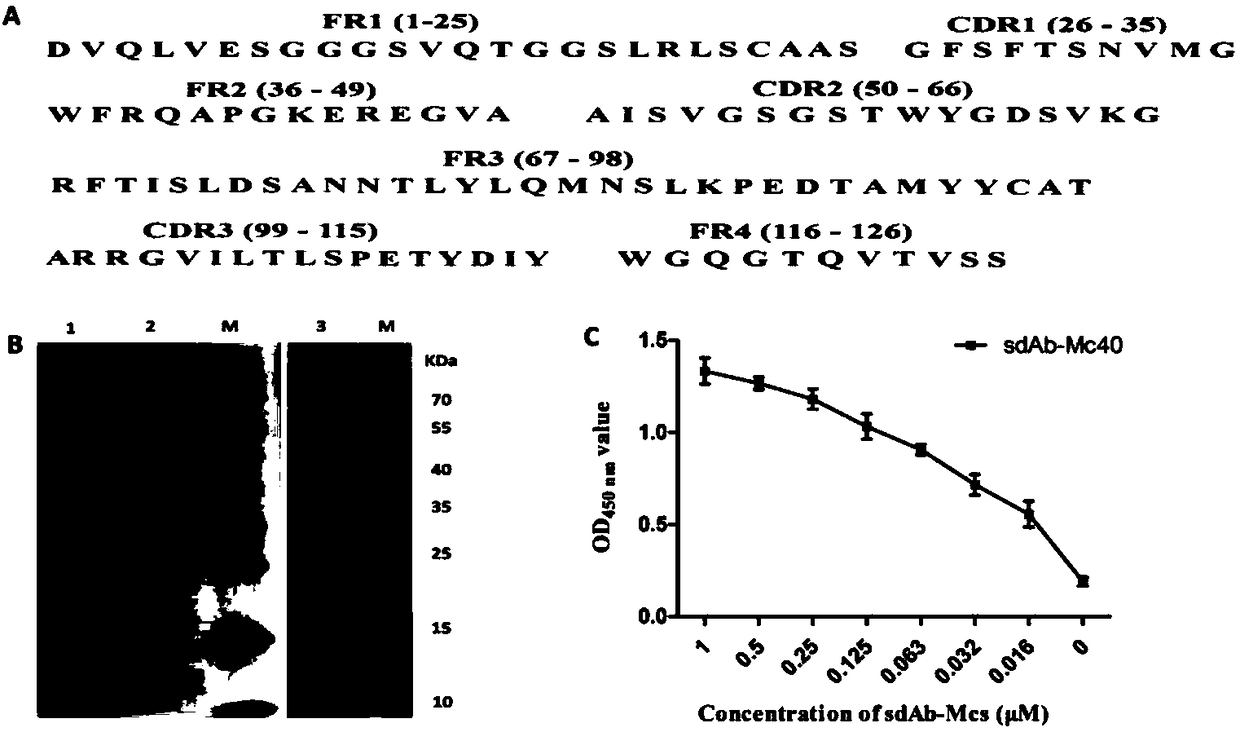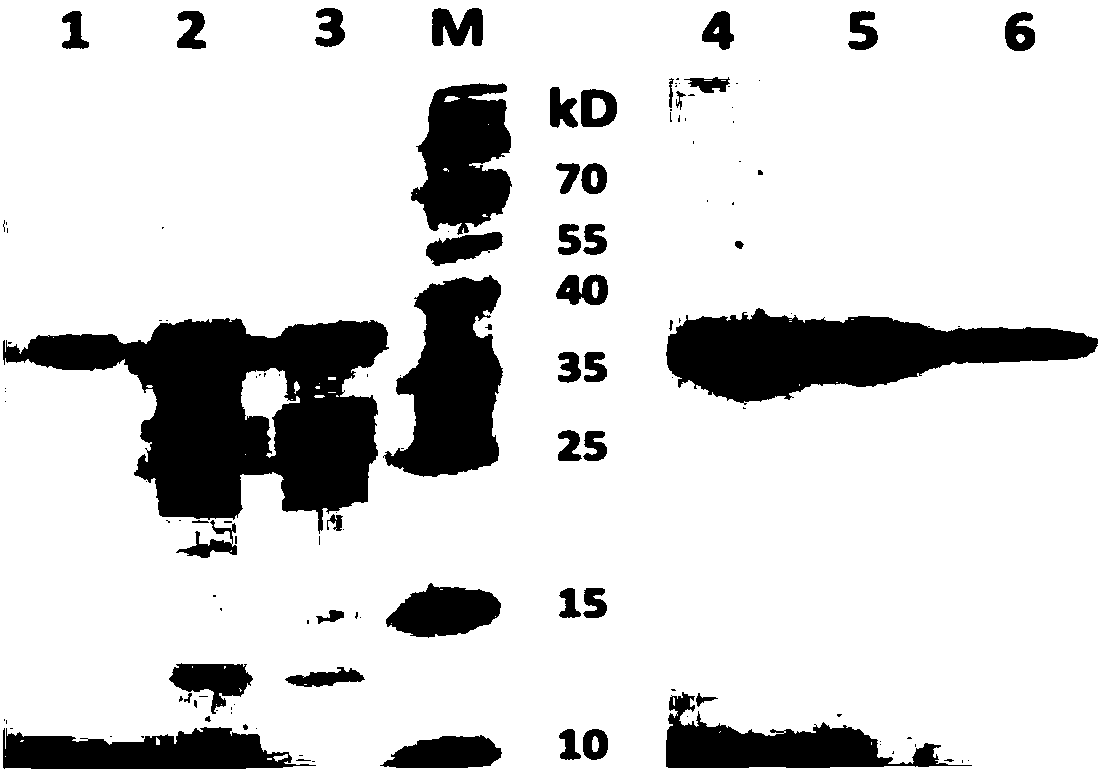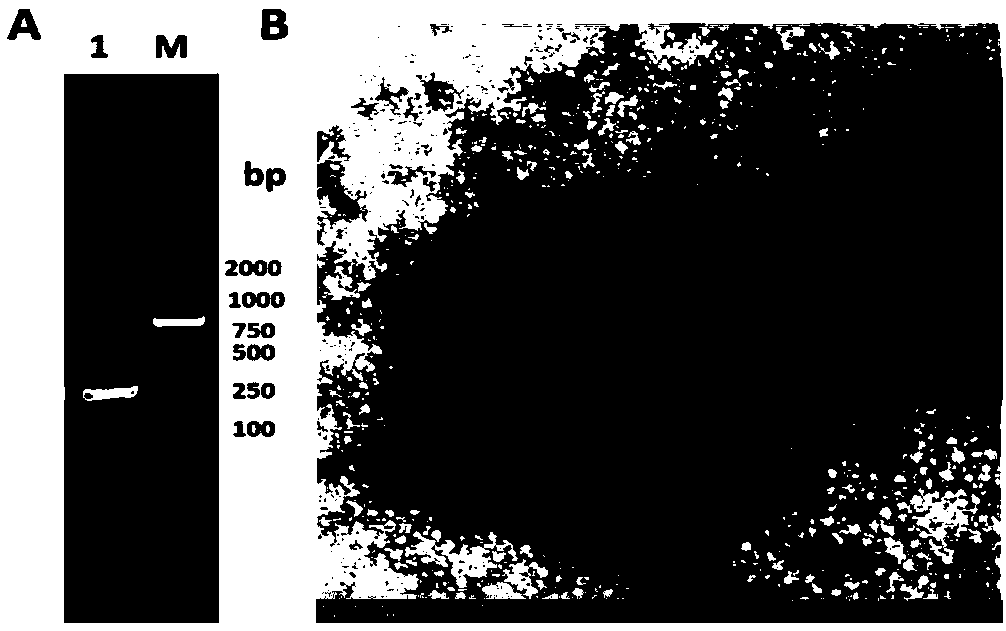Virus isolation method for low-content sample of porcine epidemic diarrhea virus (PEDV)
A porcine epidemic diarrhea and virus technology, applied in the direction of virus, virus/phage, anti-viral immunoglobulin, etc., can solve the problems of difficulty in obtaining success, difficulty in isolating a single pathogen, and achieve the effect of effective separation
- Summary
- Abstract
- Description
- Claims
- Application Information
AI Technical Summary
Problems solved by technology
Method used
Image
Examples
Embodiment 1
[0039] Example 1 Preparation of PEDV-specific immune nano-magnetic beads
[0040] 1.1 Screening and expression of PEDV membrane protein (M) specific sdAb
[0041] Using phage display technology, panned the M protein immune Bactrian camel library, obtained the phage that specifically binds to the M protein, performed sequencing analysis, obtained the sdAb gene sequence, and its nucleotide sequence is shown in SEQ ID NO.1, and performed sequence analysis Then it is cloned into PET-32a expression plasmid, expressed with Escherichia coli (E.coli), and utilizes Ni purification resin to carry out target protein purification; By enzyme-linked immunosorbent assay (ELISA), analyze sdAb-Mc40 and M protein binding activity.
[0042] Phage sequencing analysis of M protein binding to obtain specific single domain antibody sdAb-Mc40( figure 1 A); After the 32a vector is connected, it is transformed into Escherichia coli to obtain an expressed protein of consistent size, and for soluble ex...
Embodiment 2
[0058] The virus isolation method of embodiment 2 PEDV low content sample
[0059] 1 Clinical sample processing
[0060] For suspected PEDV-infected pig feces and secretions and other cotton swab samples, put them in a 2mL centrifuge tube, add 1mL sterile PBS (pH 7.4) and place at room temperature for 2h, centrifuge at 2000rpm for 5min, and take the supernatant; suspected PEDV-infected dead pig tissue samples, Use sterile PBS (pH 7.4) tissue homogenate (homogenizer or quartz sand grinding), place at room temperature for 4h or overnight at 4°C, centrifuge at 10000rpm for 10min, and take the supernatant.
[0061] 2. Immunization of nano-magnetic beads to capture PEDV in samples
[0062] Aseptically take 20 μL of 1 mg / mL immune nano-magnetic beads, add to a 2 mL centrifuge tube, wash 3 times with sterile PBS (pH 7.4), and collect the immune nano-magnetic beads on a magnetic stand. Take 1mL of the supernatant of the processed sample, add it to the centrifuge tube containing the ...
Embodiment 3
[0065] The virus isolation of embodiment 3 field PEDV infection samples
[0066] After the fecal samples of clinically suspected infection were processed, they were enriched with immune nano-magnetic beads, detected by RT-PCR, and then the captured virus was inoculated into vero cells, and CPE was observed and passaged. At the same time, it was verified by immunofluorescence and cell ultrathin section transmission electron microscopy, and the S gene was cloned by PCR for sequence analysis. Results The suspected PEDV-infected piglet feces samples were processed directly by RT-PCR, and no obvious bands were seen after electrophoresis, but after incubation with different amounts of samples and magnetic beads, RT-PCR detection showed the expected small bands ( Figure 5 B). 24h after inoculating vero cells with the magnetic beads incubated with the sample, obvious CPE appeared ( Figure 5 A); After the virus was passaged, it could be observed that there was obvious fluorescence ...
PUM
 Login to View More
Login to View More Abstract
Description
Claims
Application Information
 Login to View More
Login to View More - R&D
- Intellectual Property
- Life Sciences
- Materials
- Tech Scout
- Unparalleled Data Quality
- Higher Quality Content
- 60% Fewer Hallucinations
Browse by: Latest US Patents, China's latest patents, Technical Efficacy Thesaurus, Application Domain, Technology Topic, Popular Technical Reports.
© 2025 PatSnap. All rights reserved.Legal|Privacy policy|Modern Slavery Act Transparency Statement|Sitemap|About US| Contact US: help@patsnap.com



